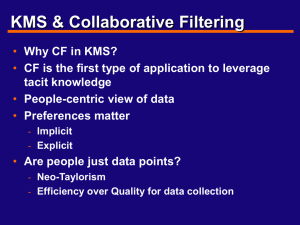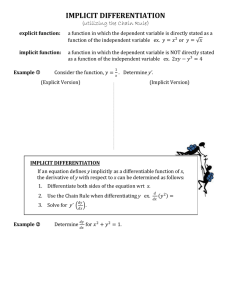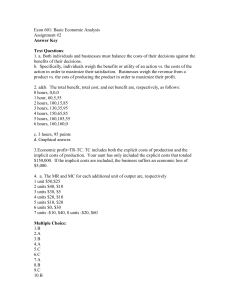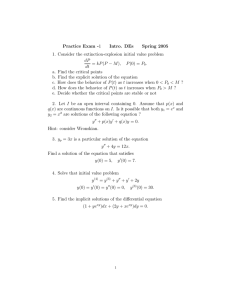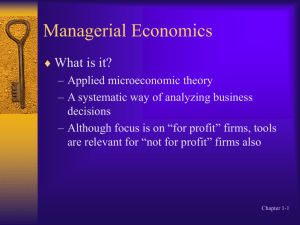CURIOUS BROWSERS: Automated Gathering of Implicit Interest Indicators by an Instrumented Browser
advertisement
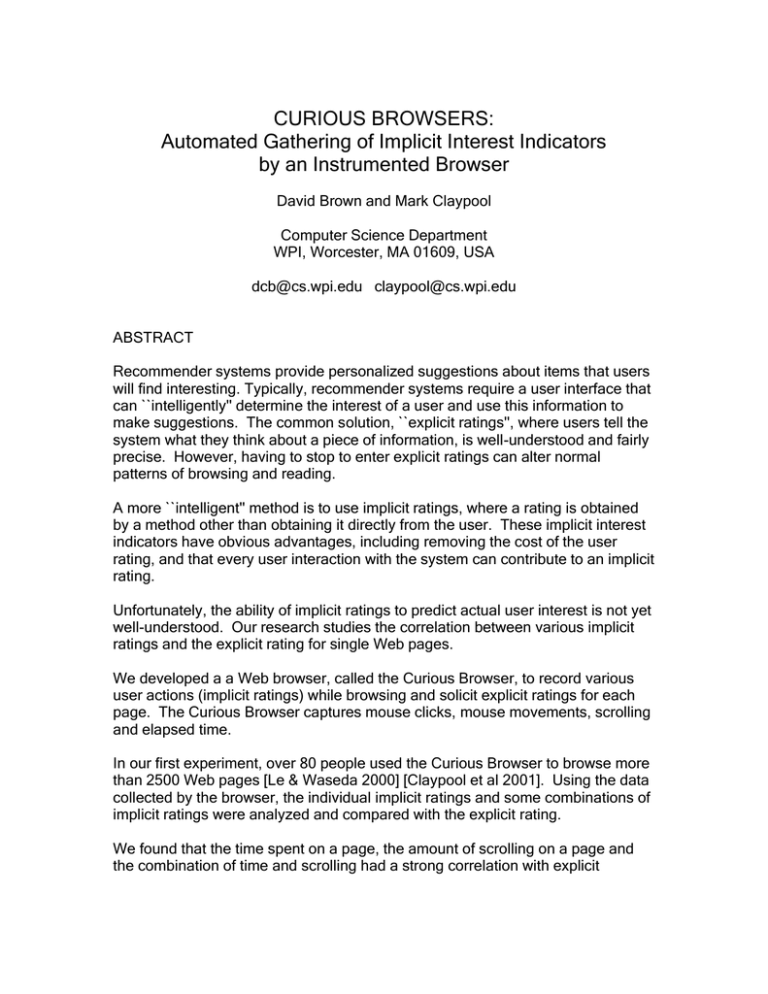
CURIOUS BROWSERS: Automated Gathering of Implicit Interest Indicators by an Instrumented Browser David Brown and Mark Claypool Computer Science Department WPI, Worcester, MA 01609, USA dcb@cs.wpi.edu claypool@cs.wpi.edu ABSTRACT Recommender systems provide personalized suggestions about items that users will find interesting. Typically, recommender systems require a user interface that can ``intelligently'' determine the interest of a user and use this information to make suggestions. The common solution, ``explicit ratings'', where users tell the system what they think about a piece of information, is well-understood and fairly precise. However, having to stop to enter explicit ratings can alter normal patterns of browsing and reading. A more ``intelligent'' method is to use implicit ratings, where a rating is obtained by a method other than obtaining it directly from the user. These implicit interest indicators have obvious advantages, including removing the cost of the user rating, and that every user interaction with the system can contribute to an implicit rating. Unfortunately, the ability of implicit ratings to predict actual user interest is not yet well-understood. Our research studies the correlation between various implicit ratings and the explicit rating for single Web pages. We developed a a Web browser, called the Curious Browser, to record various user actions (implicit ratings) while browsing and solicit explicit ratings for each page. The Curious Browser captures mouse clicks, mouse movements, scrolling and elapsed time. In our first experiment, over 80 people used the Curious Browser to browse more than 2500 Web pages [Le & Waseda 2000] [Claypool et al 2001]. Using the data collected by the browser, the individual implicit ratings and some combinations of implicit ratings were analyzed and compared with the explicit rating. We found that the time spent on a page, the amount of scrolling on a page and the combination of time and scrolling had a strong correlation with explicit interest, while individual scrolling methods and mouse-clicks were ineffective in predicting explicit interest. In the second experiment [Law, Goodwin & Cen 2002], we collected 11 additional indicators, including mouse wheel activity, status bar changes, the size of the HTML file, the user's familiarity with the page, and a trace of the mouse coordinates. Another set of around 80 users browsed nearly 1000 Web pages using the Curious Browser. From the trace we extracted vertical and horizontal lines, as our preliminary observations of users found some cursor following activity over text and links that were of interest (See [Mueller and Lockerd, 2001]). We find some evidence that horizontal lines correlate with explicit interest, and, not surprisingly, more total lines indicates more interest. Other indicators did not appear to be significant under these circumstances. Despite some difficulties in drawing strong conclusions from the second experiment, we believe that mouse movement should be part of a set of simple and compound implicit indicators that can be used to suggest a user's interest in the content of a web page. Further studies need to be carried out to ascertain stronger results. References: Mark Claypool, Phong Le, Makoto Waseda and David Brown. "Implicit Interest Indicators", In Proceedings of ACM Intelligent User Interfaces Conference (IUI), Santa Fe, New Mexico, USA, January 14-17, 2001. Steve Law, Brad Goodwin & Michael Cen. "Curiouser Browsers", Undergraduate Major Qualifying Project MQP-DCB-0106, Spring 2002, co-advised by Mark Claypool and Dave Brown, Computer Science Department, WPI, Worcester, MA, USA. Phong Le and Makoto Waseda. "Curious Browsers", Undergraduate Major Qualifying Project MQP-DCB-9906, Spring 2000, co-advised by Mark Claypool and David Brown, Computer Science Department, WPI, Worcester, MA, USA. Florian Mueller and Andrea Lockerd. "Cheese: Tracking Mouse Movements on Websites, A Tool for User Modeling", Proceedings of ACM CHI Conference, 2001. _________________________________ Version: 29th May 2003
